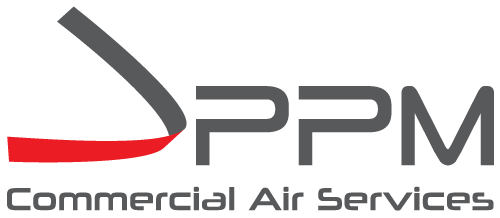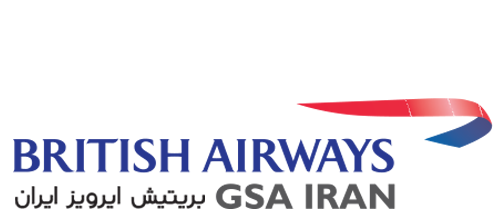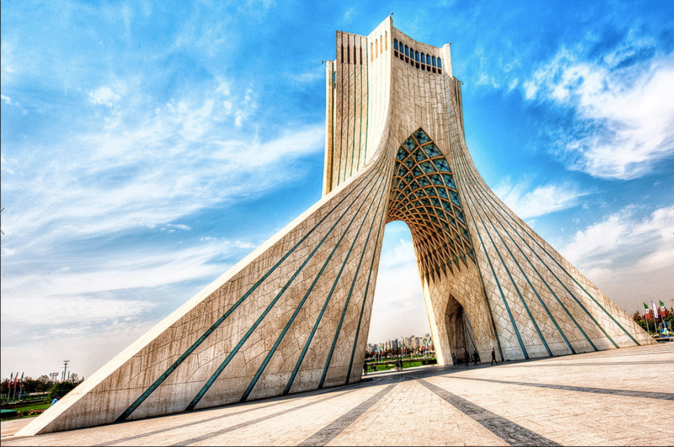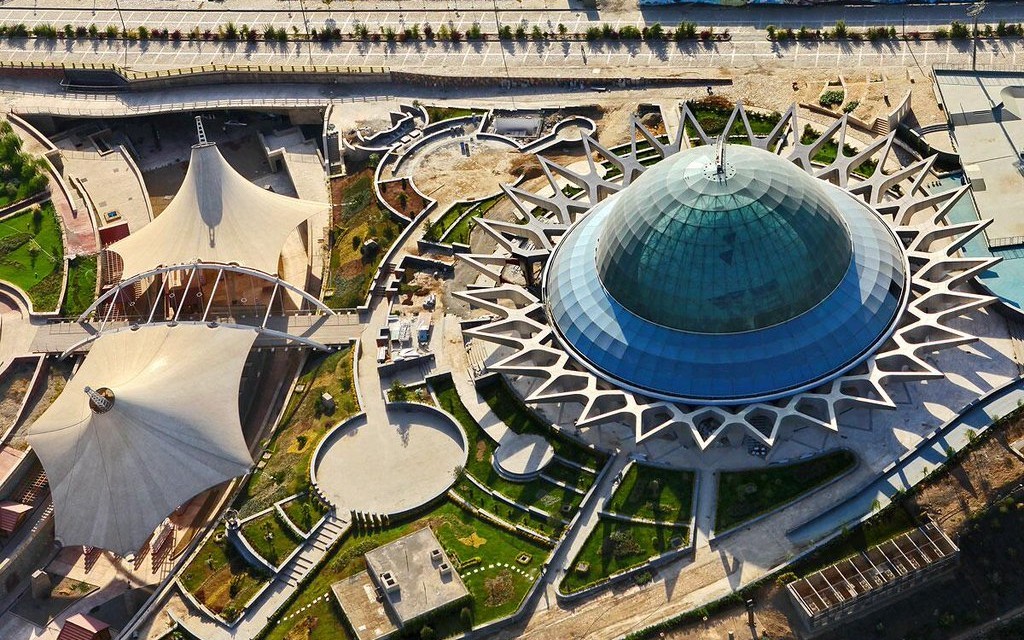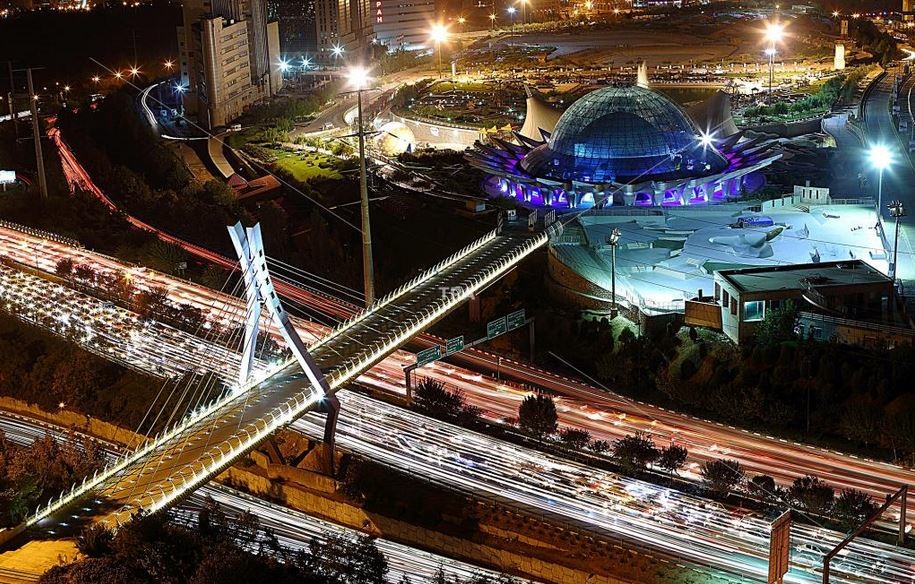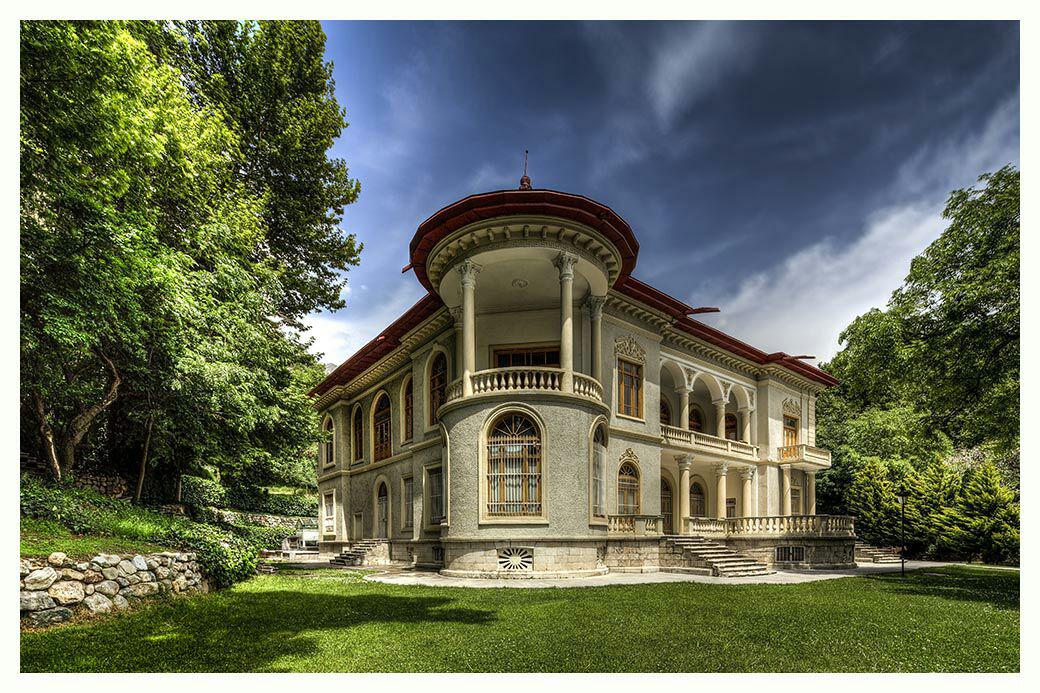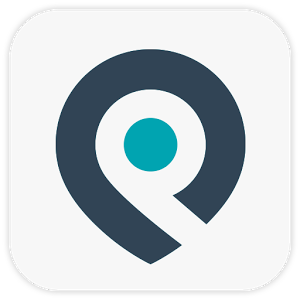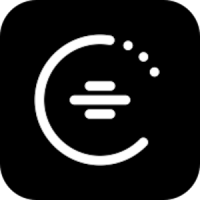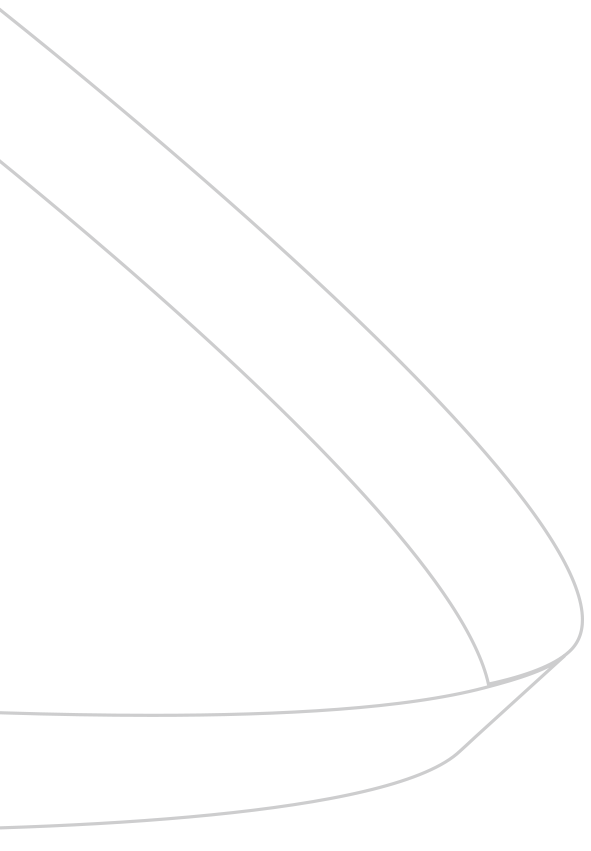
Tehran
Tehran is a cosmopolitan city, with great museums, parks, restaurants, and warm friendly people. It deserves at least a few days of your Iranian itinerary.
A combination of factors make Tehran a pleasant place to visit: The dry climate which is constantly cool (at least in the evenings), the proximity of the mountains, the parks and gardens where flowers blossom all through the year, the alleys of trees in the avenues or even smaller streets, and even the water that runs down from the upper city along deep and wide gutters which look like small rivers during spring. The Alborz range to the north of Tehran, which hosts the highest peak in Iran, provides fantastic conditions for ski lovers in the winter. In winter, the mountain hotels and ski-clubs at Shemshak, and Dizine are full several days a week. Some specialist skiers consider the snow value in northern Tehran to be some of the best in the world.
Tehran has also earned itself the rather unenviable reputation as a smog-filled, traffic-clogged and featureless sprawl of concrete bursting at the seams with 14 million residents. But you can also find an endless number of nice and cozy places in and around the city - if you know where to look. Tehran is also a city of parks and possesses more than 800 of them, all well-kept. The city is nearly a mile high above sea level and as a result is cooler than other cities in the Middle East. Summer temperatures are around 36°C or about 95-100°F. The air tends to be very dry.
British Embassy in Tehran You can reach the UK embassy through the following information: |
|
Location
Ferdowsi Avenue 198
Tehran
11316-91144
Iran
Telephone:
+98-(0)2164052000
+44 1908 516666 35°41'45.4"N 51°25'07.1"E |
|
|
Visa Restriction:
Entry will be refused to citizens of Israel and travelers with any evidence of visiting Israel (this includes entry/exit border-crossing stamps to/from countries neighboring Israel, such as Jordan or Egypt), not just (but also) Israeli entry stamps.
For tourists a 30 Day visa on arrival is available at international airports for citizens of Republic of Azerbaijan, Albania, Germany, Austria, Armenia, Uzbekistan, Spain, Australia, Slovenia, Slovakia, the United Arab Emirates, Indonesia, Ukraine, Italy, Ireland, Bahrain, Brazil, Brunei, Belarus, Belgium, Bulgaria, Denmark, Russia, Romania, Japan, Singapore, Sweden, Switzerland, Syria, Saudi Arabia, Oman, France, Palestine, Cyprus, Kyrgyzstan, Qatar, Croatia, South Korea, North Korea, Colombia, Cuba, Kuwait, Georgia, Lebanon, Luxembourg, Philippines, Poland, Malaysia, Hungary, Mongolia, Mexico, Norway, New Zealand, Venezuela, Vietnam, Netherlands, India, Yugoslavia and Greece.
No prior electronic registration is required but evidence of insurance may be requested and should be available in hard copy or can be purchased at the airport. Visa fees vary by country and are charged in Euros. First you have to pay for the insurance, then for the visa and then wait, a lot or not, for checking the passport. You need at least one hour.
By Plane
Imam Khomeini International Airport (IATA: IKA ICAO: OIIE), located 55km southwest of the city center, is the international airport in Tehran to which passenger flights operate. The domestic airport is called Mehrabad which is inside of the city. If you need a connecting flight inside Iran, you need to travel between the two airports which may take between 40 minutes to 2 hours depending on the traffic.
There are direct flights to/from numerous European, African, Middle Eastern, and Asian cities; however, there are no direct flights to/from North America or Australia. Iran Air [68] is the national carrier of Iran.
To travel between the city center and the airport:
• Buses There used to be regular buses between city and IKA airport, but as of January 2018 they don't operate anymore.
• Metro railway station on the 1st floor airport, exit near escalator on 2nd floor (jun 2017) train every 80 min, travel time about 35 minutes, schedule from airport to Tehran: 00:00, 1:20, 2:40, 4:00, 5:20, 6:40, 8:00, 9:20, 10:40, 12:00, 13:20, 14:40, 16:00, 17:20, 18:40, 20:00, 21:20, 22:40. Metro train go to red metro line (Line-8, Shahre Aftab Station), price 7000 rials (about 0.2 USD).
• Minivan Take the metro line 1 toward south to the SHAHED metro station (one stop before Haram-e-Motahhar metro station). Outside there are shared Minivan to the airport for 48K Rials per person (takes about 30 minutes)They leave when full but fill quickly (Jan 2017) and drop you at the parking airport.
• Taxis cost a fixed rate 750,000 Rials (Jan 2017). Try to find a companion to share this price. Drivers will accept US Dollars or Euros. The drive to/from the city center takes 45 minutes without traffic, but can take upwards of 90 minutes with traffic. There is a booth organizing taxis right outside the arrivals hall. You can also bargain with taxis dropping off passengers at the arrivals hall because otherwise they would have to go back to Tehran empty. Note that every price you ask for is usually expressed in tomen (1 Tomen = 10 Rials).You can try to book a taxi with the app "Snapp" - the Uber for Tehran. Prices down to 450.000 Rial are possible and you can pay with cash.
• Tehran's Mehrabad airport (IATA: THR ICAO: OIII) [69] is an older airport that is used for domestic and cargo flights. From the former US Embassy site, you can expect a metered taxi ride to cost about 250,000 IRR (August 2015). Be careful to bring exact change as many drivers will not give you change.
Despite the warnings in some travel guides, there is no exit fee for foreign travelers, neither in Mehrabad nor in Imam Khomeini Airport. The exit fee applies to foreign travellers only when leaving Iran on land or by sea.
|
|
|
|
|
Get Around
Congested traffic in Valiasr street, Tehran
Getting around traffic-clogged, sprawling Tehran is a true test of patience. While taxis are your best bet, they are pricier here than the rest of the country. A large local bus network will also take you almost anywhere you need to go, as long you can make sense of the routes and Persian line numbers. The true star of Tehran's transport system however, is the brand new metro.
By Bus
Tehran has an expansive but confusing bus network. Some require prepaid contactless card (min 20000 rials), which can be bought from booths beside the bus stops and Metro Stations used when you get off the bus, and some should be paid by cash (ranging from 4,500-6,000 rials). Note that the buses are partitioned in two sections, men-only (the front section) and women-only (the back section).
Note that in the BRT lines, the women-only section is at the front. Also, the fee is paid on the station, using the prepaid contactless card (shared with Metro), or paying to the guard.
Since bus numbers, route descriptions and other information is in Persian, your best bet is to look confused at a bus terminal; a local will surely stop to help. Each bus line has a certain and almost invariable path but only people know exactly which bus stations exist for a certain road. You shouldn't expect a map or guides even in Persian showing the bus network or bus stations. Even asking the bus driver wouldn't be a great help for you to find your way either. If you get in a bus and looking for a certain station to alight, ask one to help you - you will find many people wish to help you to find your way, most of the time.
BRT (Bus Rapid Transportation)
The BRT buses are colored in red. BRTs has special lines and travels very quickly from Azadi square (west of Tehran) directly to the East (Elm-o-Sanat). Railway square (South of Tehran) directly to the North (Tajrish square). Azadi square to free university (Northwest). Azadi square to south Terminal and parkway bridge (North of tehran) to jomhuri square. Costs between 4,000-6,000 rials. In high-traffic hours (7AM-9AM & 4PM-8PM) it is the best way to traveling . BRT has too many stations near main streets. Although you may not find an empty seat on the bus because of the crowds, people give their place to you if they know you are a tourist. The women's and men's seats and queues are separate.
The Map bus stations BRT_Tehran
By Metro
Tehran Metro
Tehran's new metro system [75] is comprised of five lines that will whisk you quickly from one end of the city to the other without having to deal with the noise, pollution and chaos of Tehran traffic. However, many residents decided to leave their cars and commute by metro, so expect huge crowds during rush hours.
There are five lines available (1, 2, 3, 4 and 7) (some stations on line 7 are still under construction) but the two most useful are lines 1 (north to south- from northern most Tajrish Station to Kahrizak Station) and 2 (east to west) which connect at the central Imam Khomeini station. All stations have signs in both Persian and English. Trains run every 10 minutes or less on rush hours (15 minutes on Fridays and holidays) from around 5:30AM-11PM every day. line4 (yellow line) recently extended eastward to Kolaahduz station and westward to Eram-e-sabz Station. It's really crowded since it is connecting some of most important points like University of Tehran in Enqelab Sq. and an interconnection to line5 (green); line5 is going to Karaj, which is a 3 million population suburb!
Tickets valid for 1 trip (including change of lines) cost 7000 rial. A go and return ticket costs 11,000 rial. There are ticket booths at every station. You can also buy a contactless fare card which is the best option if you are going to use metro a lot, or simply want to have less hassle by paying 20,000 rials for a card and use it on both metro and most of city buses (note that if you use this card, you usually pay less than any other tickets, since they charge for the longest trip on the network), to charge minimum cost in metro with this chargeable tickets you should use the card in exit station. There are three dedicated women-only carriages at two end of the train, one and half in each side. Women can anyway choose to travel aboard the other carriages.
There are a few apps for Android and iOS devices to assist passengers on using the metro. You can try downloading the Tehran Metro app which is made specially for foreign travelers. First you can find yourself on Google map (with stations marked on it) and your destination to decide which station you can get in and to which you want to arrive. After it you can select them on the stations map to get a textual explanation on taking directions and line changes along with a travel time estimation.
The Map Metro stations _Tehran
By Taxi
As with the rest of the country private and shared taxis are abound in Tehran, although you may find flagging down a shared taxi more difficult amid the traffic and chaos, while private taxis are more expensive than in the smaller cities. See the Get Around information on Iran for details on flagging a taxi. If you want to get around by shared taxi, your best bet is to hop from square to square, as drivers will be reluctant to pick you up if your shouted destination deviates too far from their route. In each square you will find certain places where the private taxis are lined up in a queue and drivers call for passengers to a destination. (mostly happening during the times when the number of waiting taxis exceeds the number of passengers). In this case, they would wait until the car gets full of passengers (mostly one people at front and 3 people at back, excluding the driver). Otherwise the people have to line up in a queue waiting for the taxis to come. This is the case during rush hours (approximately 7AM-8AM and 5PM-8PM). All these depend upon finding their regular station in the square. You can also ask them to alight sooner than your destination wherever you like but you have to pay their total fee up to destination. The cost of such a ride from Azadi square to Vanak Square is around 150,000 rails (15,000 Tomans) (Prices accurate as of August 2015, but huge inflation means they change quickly). Most drivers are very poor at English - if your destination is anything other than an extremely popular spot (Bazaar, etc) you should bring it on a map or written in Farsi.
Snapp [76] and Tap30 [77] are the Iranian version of Uber in Tehran which are fairly cheap and their price is calculated in advance. The app can be downloaded from Iranian App Market, Cafe Bazaar [78] and had English version, but a local SIM card is required to activate it. Although the drivers may not be good English speakers, the support line speaks English well and can handle the communication problems between you and the driver.
Motorcycle taxis are a Tehran specialty and offer a way to weave quickly through the city's traffic-clogged streets. You'll see plenty of these drivers standing at the side of the road calling "motor" at all who pass by. Keep in mind motor taxi operators can seem even more suicidal than the average Tehran driver when driving. Agree on a price before you take off and expect to pay slightly less than chartering a private taxi. There are now even online versions of motorcycle taxis offered by Snapp [79] and Alopeyk. [80]
You can find more details in following links: 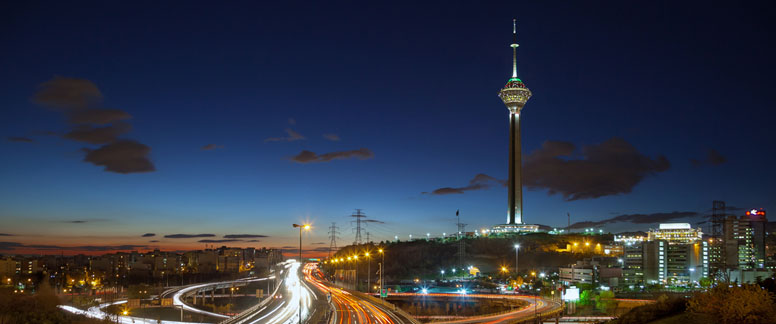 |
|
